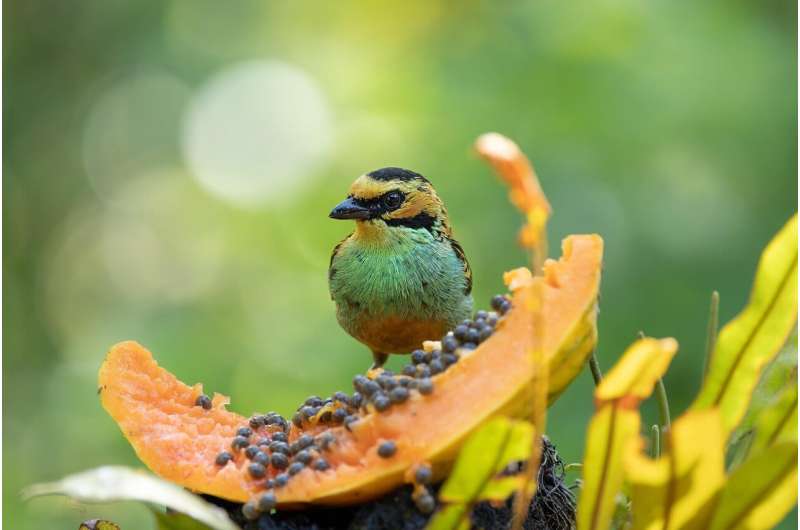
A team of researchers from Princeton University has revealed a fascinating mechanism by which birds enhance their plumage color using layers of black and white feathers. Published on July 26, 2025, in the journal Science Advances, the study challenges previous assumptions about bird coloration and highlights the sophisticated evolutionary strategies that birds employ.
The research, led by Rosalyn Price-Waldman and her colleagues, demonstrates that birds can intensify the brightness of their plumage by strategically placing colored feathers over layers of either black or white underlying feathers. This technique allows the already vibrant colors of certain birds to appear even more striking, thereby aiding in mate attraction and survival.
How Color Enhancement Works
Typically, male birds exhibit more vivid colors than their female counterparts, a phenomenon first noted by Charles Darwin. The principle of “sexual selection” explains that males with brighter plumage are more likely to attract mates, thus contributing to their reproductive success. The research findings indicate that the black layer beneath colored feathers absorbs excess light, enhancing the visibility of hues like blue. This absorption is critical; the blue color we perceive arises from the fine structure of the top layer of feathers that scatters light in specific ways. If the under-layer were lighter, the blue would not appear as vibrant due to additional light reflections.
Conversely, the study found that yellow feathers, which derive their color from pigments known as carotenoids, are enhanced by a white under-layer. The white layer reflects light passing through the yellow feathers, amplifying their brightness and making them stand out more against other colors.
A Widespread Phenomenon in the Avian World
The focus of the study was primarily on the tanager, a colorful fruit-eating bird found in Central and South America. However, the researchers expanded their investigation to include other bird families, discovering that the use of black and white feather layers for color enhancement is prevalent across various species. This includes the Australian fairy wrens, known for their vivid blue plumage.
The findings suggest that birds have been employing this clever color enhancement technique for millions of years, indicating a long-standing evolutionary strategy. This research not only deepens our understanding of avian biology but also offers potential insights into how we might apply these principles in fields like architecture, art, and fashion to produce more vibrant colors.
The implications of this study extend beyond mere aesthetics; it contributes significantly to our understanding of how complex traits such as color evolve in nature. As researchers continue to explore the intricacies of bird coloration, it opens up new avenues for appreciating the diversity and adaptability of wildlife.
For more in-depth information, the study can be accessed in the journal Science Advances, with the full citation: Rosalyn M. Price-Waldman et al, “Hidden white and black feather layers enhance plumage coloration in tanagers and other songbirds,” DOI: 10.1126/sciadv.adw5857.





